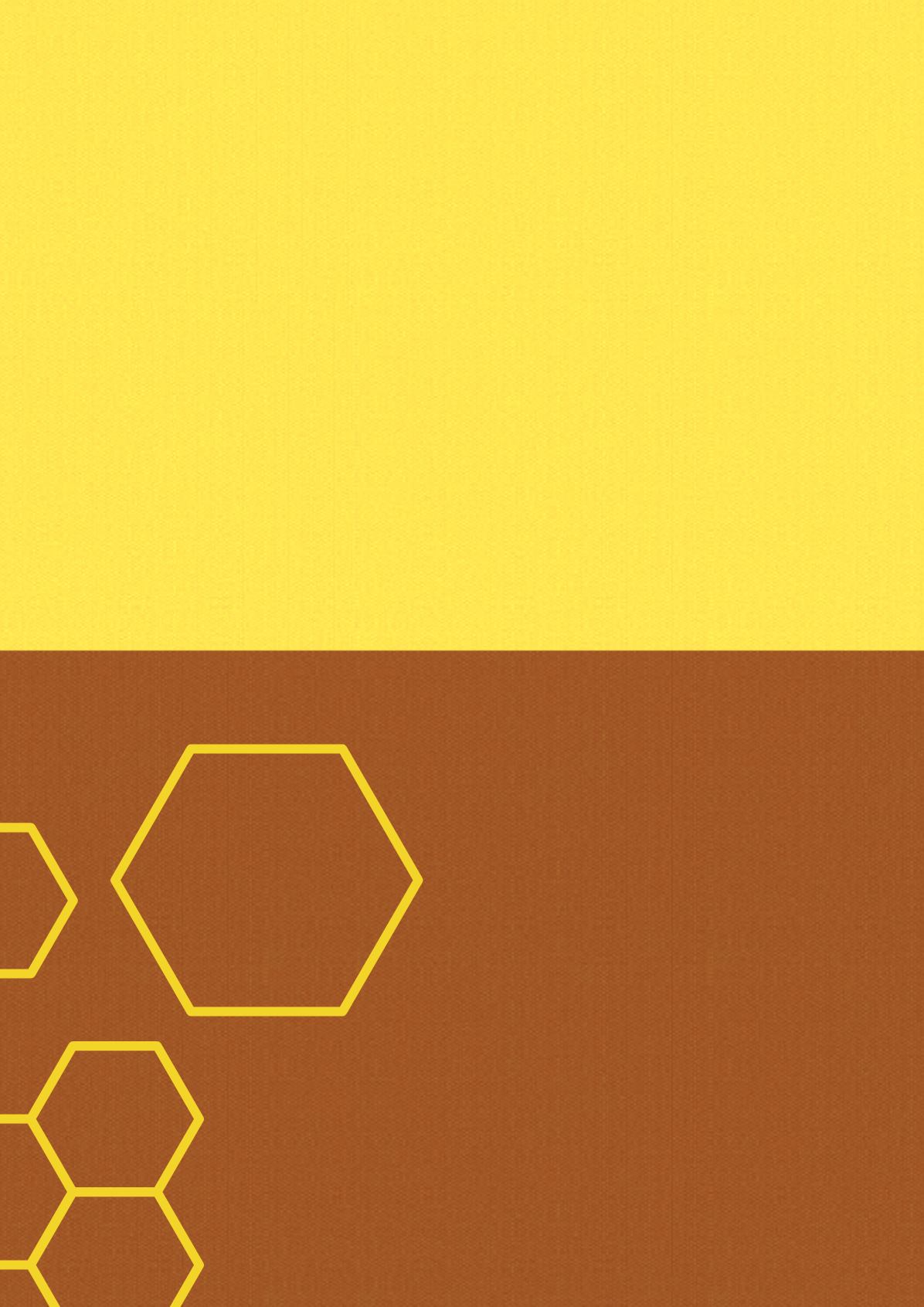
It
may sound audacious to state that the
fate of humankind is closely intertwined with bees,
and yet there might be a certain amount of truth
to this statement. Over a third of the world’s food
production depends on pollinators, and the honey
bee is a key player. Wild bees alone contribute
at least $57 billion US dollars per year to America
by plant pollination [1]. Industr ial agr icultural
farms often supplement the wild bee’s work with
bumblebees or honeybees reared by commercial
bee-keepers. However, over the past few decades
both entomologists (scientists who study insects) and
bee-keepers have reported a significant decline in
bee populations. Bee-keepers in the US and Europe
have reported up to 50% lost in bee hives over a
matter of days, a phenomenon known as Colony
Collapse Disorder [2]. This rapid decline in global
bee population could threaten food production.
The alarming decline in bee populations could
be attributed to multiple causes including parasites,
人
類的命運和蜜蜂種群是否有著密切的聯繫?在
某程度上,兩者確實是息息相關。超過三分之一的世界
糧食生產是依靠著傳粉者,而野生蜜蜂擔當著一個關鍵
角色。在美國,單是野生蜜蜂通過傳播花粉,每年就至
少貢獻了570億美元[1]。工業農場常常須要利用飼養的
熊蜂和蜜蜂來補足野蜜蜂的工作。但是,在過去的幾十
年內昆蟲學者和養蜂人都曾報告蜜蜂種群的顯然下降。
美國和歐洲的養蜂人甚至報導在幾天之內就失去了百分
之50的蜂窩。這個現象叫做蜂群衰竭失調[2]。迅速下
降的蜜蜂種群可以威脅到糧食生產量。
蜂種群驚人的下降是基於幾個原因,包括寄生蟲、
疾病、習慣和食物來源的改變和農藥[3]。在2013年,
歐盟委員會制定了新菸鹼類殺蟲劑的禁令。早前使用新
菸鹼類殺蟲劑,經已證實會危害蜜蜂健康。舉例來說,
在美國的俄勒岡州,以新菸鹼類控制蚜蟲種群,卻因此
而殺死了五萬只蜜蜂,這是至今最嚴重的蜜蜂毒殺事
件。
拯救蜜蜂種群,也許解決之道在於蜜蜂費洛蒙。由
生物分泌出來的費洛蒙可影響同種的生理機能和行為。
爲了維持群體健康,不同的蜜蜂成員會分泌出不同類型
BEE PHEROMONES
diseases, changes in habits and food sources, and
the use of pesticide [3]. In 2013, the European
Commission enacted a ban on neonicotinoids
pesticides. Early use of this pesticide was linked
with being harmful to bee health. For example, in
Oregon, USA, neonictinoids was used on trees to
control the population of aphids; instead 50,000
bees were killed in the process, which is the largest
mass bee poisoning to-date.
In this gloomy scene, pheromones, a chemical
s i gna l secreted by bees may save the day.
Pheromones are secreted by organisms to influence
the physiologies or behaviors of their conspecifics.
In an active bee hive, several types of pheromones
are secreted by different members to maintain
the health of the colony. The queen mandibular
pheromone (QMP) is, perhaps, one of the most well-
known set of pheromones. Composed of carboxylic
acids and aromatic compounds, it is secreted by
the queen bee, the only bee in the entire hive
This article was
written by Hong
Kong secondary school
students enrolled in The
HKUST Dual Programme
2014. To learn more about this
programme, please visit
/
Dual_Program/dual_program_
overview.php
本徵文由香港科技大學
中學
/
大學雙修課程的香港
中學生所寫


